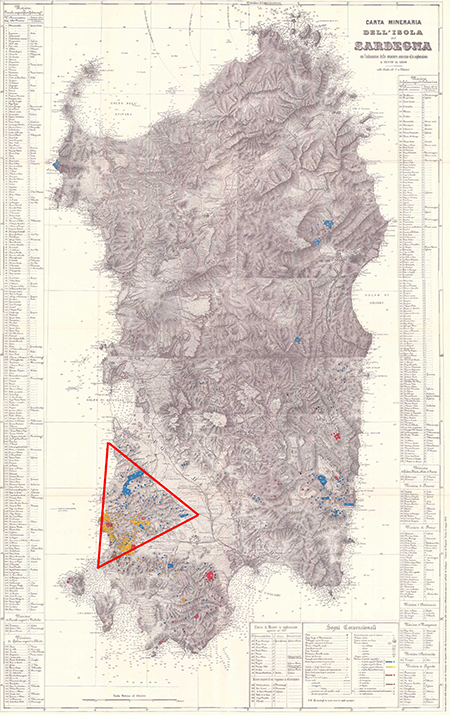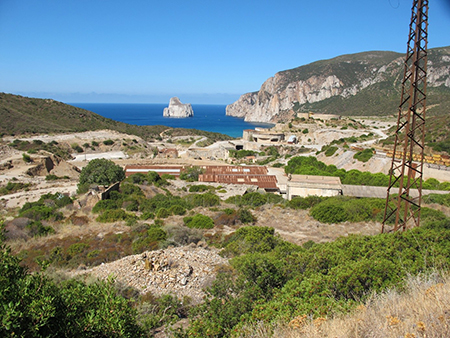The Iglesiente - Archaeological-historical investigations of the montane-landscape in the southwest of Sardinia from the early Iron Age to late antiquity
Funded by the German Research Foundation (Deutsche Forschungsgemeinschaft: DFG)
Contacts: Norbert Hanel (norbert.hanel@uni-koeln.de) and Bärbel Morstadt (baerbel.morstadt@rub.de)
Sardinia, the second largest island in the Mediterranean, was known for its wealth of silver, lead, copper and zinc. These sought-after ores are considered to be one of the main reasons for Phoenician, Punic and Roman interest in the island. The largest deposits are located in the landscape of Iglesiente in the southwest and are closely connected with the local settlement history.

However, the exploration of Sardinia, especially the Iglesiente, as an important ancient mining region, especially for these eras, has not yet been systematically pursued. Largely unknowns include which ores were actually exploited ores and their deposit locations, the smelting and processing sites, the organisation of the chaîne opératoire, the transport and trade of mined ores, and related administrative and socio-historical aspects. Ultimately, the economic relationships in the ancient Mediterranean as well as the relations with the better-researched regions, such as southern Spain and Cyprus during the period of the Phoenician expansion, the Carthaginian hegemony and the Roman Empire, are completely unclear.
We aim to contribute to closing this research gap by paradigmatically reconstructing the "old" mining landscape of Iglesiente in south-western Sardinia over a longer period, namely from the early 1st millennium BCE to late antiquity.
In the first step, the research was aimed at already known finds and findings of mining-archaeological and infrastructural relevance. Not only individual scientific publications of archaeological or epigraphic orientation were included, but also, and in particular, old travel journals and descriptions by mining directors during the late 19th century in Sardinia.

Thanks to travel funding from the Fritz Thyssen Foundation, the first trip took place from 03.-14.09.2014, during which we devoted ourselves to understanding the geographical and topographical situation in the southern part of the Iglesiente and to visiting the museums with the finds mentioned above. We explored the coastal situation regarding possible ancient ore transfer stations onto ships, the hinterland with settlements such as Grugua, its traffic routes reconstructed through written sources and milestones, as well as the location and infrastructural integration of the temple and the ancient settlements of Antas, the southern connections to Monte Sirai and Sulcis, and the western connection of the so-called Via Sulcitana. We searched for potential places of archaeological and mining-archaeological field research and built a network with colleagues of the Soprintendenza di Cagliari e Oristano. Another trip in February to March of 2015 took us to the northern part of Iglesiente.

